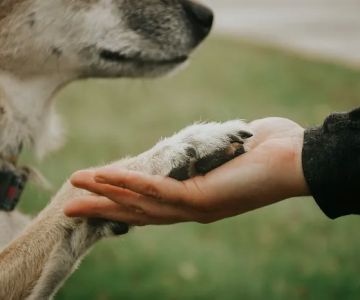Pet First Aid Kit Essentials for Pet Owners
As a pet owner, one of the most important things you can do for your furry friend is to be prepared for any emergencies that may arise. From cuts and scrapes to more serious injuries or sudden illnesses, having a well-stocked pet first aid kit can make all the difference in providing the proper care until you can get professional help. In this article, I’ll share the essentials that every pet first aid kit should include, based on my personal experiences and research. I’ve learned the hard way how important it is to be prepared, and I want to ensure that you and your pet are ready for any unexpected situations.
1. Bandages and Gauze Pads
The first and most basic item that should be in every pet first aid kit is bandages and gauze pads. These are essential for covering and protecting any cuts or abrasions your pet might get while playing outside, during a walk, or in an accident. I’ve had moments when my dog got a small cut while hiking, and having gauze pads and bandages on hand saved us a trip to the vet.
1.1 Self-Adhesive Bandages
Self-adhesive bandages are great because they don’t require any clips or ties. You can easily wrap them around the injured area, and they will stick to themselves without sticking to your pet’s fur. I always keep a roll of these in my kit for emergencies, and they have come in handy more times than I can count. Make sure to get a few different sizes to accommodate both small and larger pets.
1.2 Gauze Pads and Roll
Gauze pads are versatile and can be used to apply pressure to stop bleeding or to cover a wound before wrapping it with bandages. I’ve used these to cover small wounds and keep them clean. Gauze rolls are also important for wrapping larger areas and holding dressings in place.
2. Antiseptic Solution
Whenever my pet gets a cut or wound, I make sure to clean it with an antiseptic solution. It’s critical to prevent infection, which can occur quickly if wounds aren’t treated properly. Over the years, I’ve learned the importance of keeping an antiseptic solution in my pet first aid kit. I usually opt for pet-safe antiseptics like povidone-iodine or chlorhexidine, both of which are gentle on the skin but effective at preventing infection.
2.1 Pet-Safe Antiseptic Wipes
Wipes are a great addition to your first aid kit for quick cleaning of small wounds, paws, or even if your pet gets something sticky on its fur. They are easy to use, especially if you’re on the go or out in the field with your pet. Keep them in your bag or car for quick access.
2.2 Antiseptic Spray
If you’re dealing with a larger wound, an antiseptic spray may be more effective. It’s easy to apply, especially if the area is hard to reach, like between your pet’s paws. I always have both wipes and sprays on hand for a variety of scenarios.
3. Tweezers and Scissors
Tweezers and scissors are indispensable tools in a pet first aid kit. I’ve used them to remove splinters, thorns, or other debris that my dog picked up during a walk. Tweezers allow me to get rid of small objects embedded in the skin, which can be uncomfortable for your pet and lead to infections if left untreated.
3.1 Scissors with Rounded Tips
When trimming hair around a wound or cutting bandages to size, rounded-tip scissors are safer than sharp-pointed ones. I’ve found that having a pair of scissors specifically for these tasks reduces the risk of accidentally cutting my pet or myself.
3.2 Tick Remover
If you live in an area where ticks are common, having a tick remover tool is essential. Ticks can transmit diseases to pets, and removing them quickly and safely is important. I’ve had to use a tick remover a few times, and I always make sure it’s in my kit whenever I take my pets hiking or out in nature.
4. Thermometer and Fever Treatment
Just like humans, pets can run fevers, and it's important to monitor their temperature when they’re feeling off. I keep a pet-specific thermometer in my first aid kit to quickly check my pet’s temperature if they seem sluggish or unwell. A fever can be an indication of infection or illness, and early detection is crucial.
4.1 Digital Thermometer
Make sure to have a digital thermometer designed for pets, as these give quick and accurate readings. Always check with your vet about the correct temperature range for your specific pet. For example, a dog’s normal body temperature is typically between 101°F and 102.5°F.
4.2 Fever Reducers (Under Vet Guidance)
Sometimes, pets can run high fevers that require treatment. Having a fever-reducing medication, as prescribed by a vet, can be helpful in these situations. However, it’s essential that you get the right advice from your vet about the types and dosages of medication before using them at home.
5. Medications and Pet-Safe Pain Relievers
Medications are an important part of a pet first aid kit. I always carry any medications my pets need, as well as some emergency items like pet-safe pain relievers or antihistamines in case of allergic reactions. I highly recommend speaking with your veterinarian about what medications should be included in your kit.
5.1 Pet-Specific Pain Relief
Never give your pet human pain relievers like ibuprofen or acetaminophen. These can be harmful and even fatal for pets. Instead, opt for pet-specific pain relief products, which are safer for animals. My vet recommended a certain pet-safe pain reliever for my dog after a surgery, and I always keep it in my kit in case of injury or discomfort.
5.2 Antihistamines for Allergies
Antihistamines can be a lifesaver if your pet has allergic reactions to certain plants, food, or insect bites. It’s important to consult with your vet before adding any medication to your kit, but antihistamines like Benadryl (with vet approval) can help manage minor allergic reactions.
6. Emergency Contact Information and Pet First Aid Guide
Finally, one of the most important items in your pet first aid kit is a list of emergency contacts. Make sure to include the contact information of your regular vet, as well as the nearest emergency animal hospital. I always have this information saved in my phone, but having a paper copy in your first aid kit can be useful in case of power failure or phone issues.
6.1 Pet First Aid Guide
A pet first aid guide, like a small pocket-sized booklet, can be incredibly helpful in stressful situations. It can provide step-by-step instructions for handling emergencies, such as CPR or wound care, until you can get to a vet.











